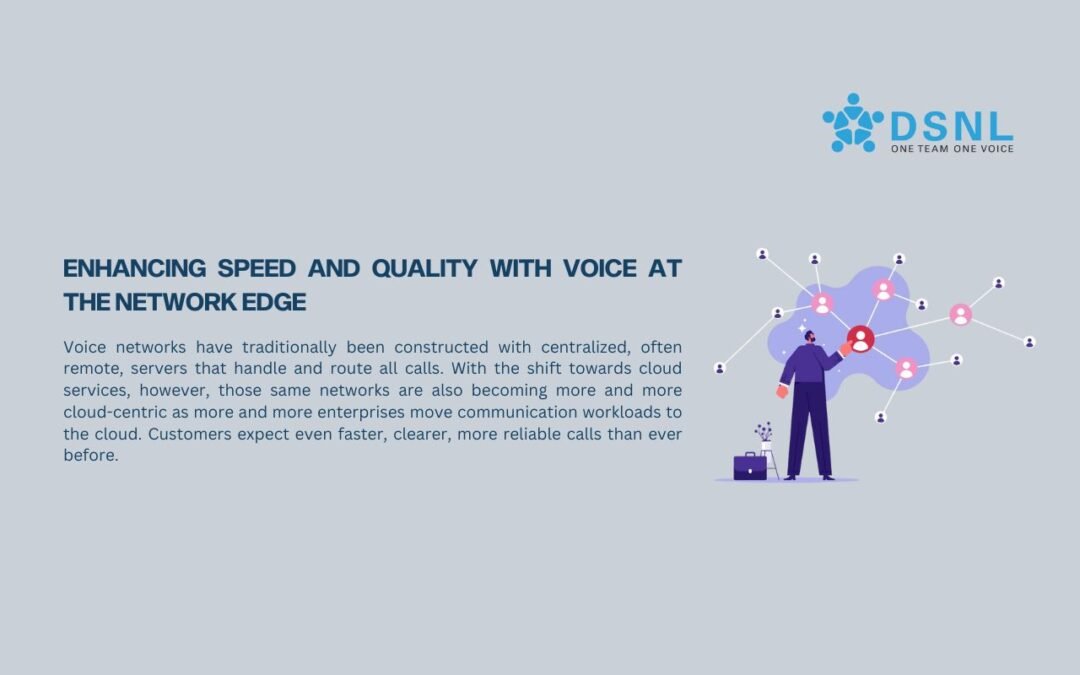Voice networks have traditionally been constructed with centralized, often remote, servers that handle and route all calls. With the shift towards cloud services, however, those same networks are also becoming more and more cloud-centric as more and more enterprises move communication workloads to the cloud. Customers expect even faster, clearer, more reliable calls than ever before.
The further away a call has to travel to a cloud server and back again, however, the more opportunities there are for lag, jitter, and bandwidth congestion that can cause the experience to degrade. Edge computing is already beginning to change that by allowing voice calls to be processed at the edge of the network itself, closer to the end-user.
Edge computing
Edge computing refers to the process of offloading some of the work done by centralized servers to local or regional processing nodes that are closer to the end-user.
These “edge” nodes are capable of handling some of the processing load on the “edge” of the network, in the geographical sense.
For voice networks, that means that incoming calls can be routed and processed locally at these edge nodes, rather than having to go back and forth to the cloud server. This is how latency is reduced and call quality is improved.
Better Calls, Everywhere with Edge Voice
Routing calls to local processing nodes also has other benefits, beyond simply improving latency. Edge voice processing also gives network operators a greater degree of control over jitter (variation in delay), packet loss, and other network effects that directly impact call quality.
This leads to a more consistent and higher quality of service (QoS) for users, and a higher quality of experience (QoE) for all participants in a voice conversation. Edge voice also gives enterprises a more consistent call experience across all regions and offices, so remote workers, international clients, and off-site branches can all enjoy the same superior level of call performance.
Edge Voice Solutions for Next-Generation Applications
But fast and clear calls aren’t the only benefit of voice networks with edge processing capabilities. Voice solutions built on edge processing aren’t just faster, they also open the door to all sorts of next-generation applications that weren’t possible with earlier technology. Edge voice with its ultra-low latency voice processing also unlocks a variety of new services, including collaborative workspaces, real-time language translation, and AI-enhanced voice analytics.
Saving Money and Bandwidth with Edge Networks
Edge-based voice solutions can also result in substantial cost savings, on top of the already-significant quality and reliability gains. Because call processing and data routing are being done locally on the edge, instead of at remote cloud servers, the overall consumption of bandwidth goes down, as does unnecessary congestion on the core cloud infrastructure.
Voice services on an edge network are also more secure, since less data is traveling back and forth over a potentially vulnerable network. Calls also benefit from the enhanced security and privacy offered by having voice calls processed and analyzed closer to their origin, allowing for more compliance with data protection regulations and privacy laws.
Conclusion
Enterprise voice networks have come a long way from early centralized call centers and large, on-premise PBX systems to today’s global cloud-based deployments. But as companies continue to scale and digitalize their communications systems, traditional, cloud-only models are running into performance issues.
Edge-based voice networks hold the promise of a more flexible, resilient, and forward-looking communication architecture for businesses of all sizes. Talk to DSNL today about our leading-edge, voice-enabled solutions, and don’t get left behind.

